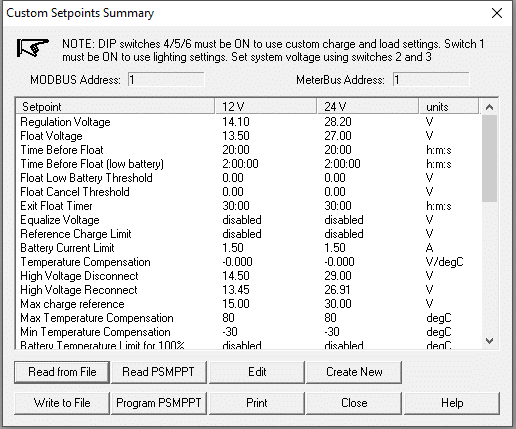I had a confusing situation the other day from one of our solar installations in Africa - (we're a volunteer group). One of our systems is small with two identical (110 amp.hr) batteries connected in parallel. Currently it is underpowered (compared to load and battery capacity) with only 1250 watt.hrs of panel capacity installed so far. The parallel batteries are charged by a MPPT controller, and until we install additional panels, it's taking two days of sunlight to fully recharge the batteries. At the time of testing (during daylight hours) the system voltage read 13.0 volts. This would suggest the charge controller was in Bulk mode – absorption voltage is set at 14.3 vDC, so apparently the battery bank wasn’t fully charged yet.
Due to other concerns, during our troubleshooting I had them remove one battery and operate with the other, and vice versa. In both cases, operating with a single battery the system voltage read 13.6 and 13.7 vDC. I always thought Bulk mode was at constant current, so I don’t understand why the system voltage with two batteries in parallel would be less than with one battery. If I'm "sinking" more current into two batteries, given constant power, I can see how the voltage would be dragged down. So is the current not constant, or could something else be going on?
I'd appreciate any thoughts.
Thanks
Due to other concerns, during our troubleshooting I had them remove one battery and operate with the other, and vice versa. In both cases, operating with a single battery the system voltage read 13.6 and 13.7 vDC. I always thought Bulk mode was at constant current, so I don’t understand why the system voltage with two batteries in parallel would be less than with one battery. If I'm "sinking" more current into two batteries, given constant power, I can see how the voltage would be dragged down. So is the current not constant, or could something else be going on?
I'd appreciate any thoughts.
Thanks

Comment